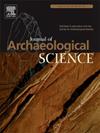Trauma or taphonomy? A forensic reassessment of perimortem cranial trauma in burials from the Phaleron cemetery (Archaic Athens, Greece)
IF 2.5
1区 地球科学
Q1 ANTHROPOLOGY
引用次数: 0
Abstract
The Phaleron cemetery was one of the most important burial sites in Archaic Attica (8th–5th centuries BCE). Its burials include individuals showing signs of captivity (i.e., evidence of physical restraints) and are believed to potentially represent executed prisoners. This study reassesses the previously proposed presence of perimortem cranial trauma in these distinctive individuals, based on independent evaluations by two experienced forensic practitioners, a comparative sample of documented forensic trauma cases from modern Greece, and multivariate statistical analysis. Of the 19 crania analyzed, only two of the distinctive (or “D-Group”) burials showed clear evidence of perimortem trauma, with only one of these presenting all diagnostic perimortem indications. However, even in these cases, the consistent location of the fractures (mainly on the side of the skull) relative to the underlying soil, along with the water-rich nature of these seaside contexts, may also likely suggest a taphonomic origin. These results highlight the importance of contextual and environmental factors in trauma interpretation, emphasizing the value of documented forensic references and multivariate approaches that can assess multiple diagnostic traits together. More broadly, our findings underscore the need for caution when attempting to link skeletal trauma to the cause of death in bioarchaeological contexts, where long-term taphonomic effects can play a decisive role.
创伤还是死亡?法勒隆墓园(希腊古代雅典)死前颅骨创伤的法医再评估
Phaleron墓地是古代阿提卡(公元前8 - 5世纪)最重要的墓地之一。其中埋葬的人有被囚禁的迹象(即身体受到束缚的证据),据信可能是被处决的囚犯。本研究基于两位经验丰富的法医从业者的独立评估、现代希腊记录在案的法医创伤病例的比较样本和多元统计分析,重新评估了之前提出的这些独特个体死前颅外伤的存在。在分析的19个颅骨中,只有两个独特的(或“d组”)埋葬显示出明显的死前创伤证据,其中只有一个表现出所有诊断的死前迹象。然而,即使在这些情况下,相对于下面的土壤,骨折的一致位置(主要在头骨的一侧),以及这些海边环境富含水的性质,也可能表明一个地面学的起源。这些结果强调了背景和环境因素在创伤解释中的重要性,强调了文献法医参考和多元方法的价值,这些方法可以一起评估多种诊断特征。更广泛地说,我们的研究结果强调,在生物考古背景下,当试图将骨骼创伤与死亡原因联系起来时,需要谨慎,因为长期的埋藏学效应可能起决定性作用。
本文章由计算机程序翻译,如有差异,请以英文原文为准。
求助全文
约1分钟内获得全文
求助全文
来源期刊

Journal of Archaeological Science
地学-地球科学综合
CiteScore
6.10
自引率
7.10%
发文量
112
审稿时长
49 days
期刊介绍:
The Journal of Archaeological Science is aimed at archaeologists and scientists with particular interests in advancing the development and application of scientific techniques and methodologies to all areas of archaeology. This established monthly journal publishes focus articles, original research papers and major review articles, of wide archaeological significance. The journal provides an international forum for archaeologists and scientists from widely different scientific backgrounds who share a common interest in developing and applying scientific methods to inform major debates through improving the quality and reliability of scientific information derived from archaeological research.
 求助内容:
求助内容: 应助结果提醒方式:
应助结果提醒方式:


